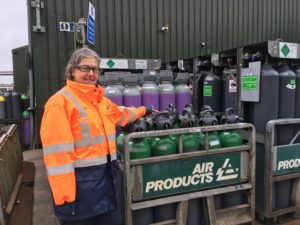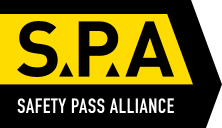Christina Fry, Chemical Engineer and UK/Ireland Environment Health & Safety Manager for Air Products, explores how a shift in approach could hold the key to safer and more productive working environments.

It’s not uncommon, even now, to hear people talk about making time for health and safety. What, you might ask, could possibly be wrong with that?
The idea of making time for anything suggests relegating the thing in question for consideration only at a certain time of day, for a certain amount of time. Ironically, the very things we seek to make time for are often the elements of our lives that get side-lined for seemingly bigger and more pressing priorities. We all know the drill – “I need to make more time for friends and family, but this work deadline (and the next) is just too pressing. I’ll spend time with them tomorrow”. And tomorrow never comes.
Arguably this is an unhealthy approach to life that ultimately results in emotional and physical imbalance. One thing is for certain however – ‘being safe’ simply doesn’t work like that. It can’t be put in a neat box, for consideration at the end of the day – it needs to be part of an inherent attitude and approach, a natural part of our day to day activity.
Perhaps one of the simplest examples of this in practice is the ‘Green Cross Code’. As adults, the simple, intuitive process of stopping, looking and listening before we cross the road is in-built. We don’t think about it, we don’t even recite it to ourselves, we just do it. But this wasn’t an innate ability we were born with, we had to learn it through repetition and practice, and I believe it is this process of re-training the brain that could be fundamental to both reducing accidents and improving productivity.
But how can this work in practice?
Mindfulness will be a recognised term to most of us, regardless of whether we value it as part of a personal well-being strategy or dismiss it as slightly too alternative or leftfield for our needs. In all the recent hype however, it can be easy to lose sight of what mindfulness actually is – and that’s, quite simply, paying attention to the present moment, and having a consciousness of what is going on inside and outside of ourselves right now.
We currently operate in an economic environment that sees all of us under pressure to deliver more, for less. But in a drive to boost profits and make efficiencies, senior management teams are often triggering behaviours that ultimately curb productivity. Rarely focused on the task in hand, our brains are constantly whirring, thinking about the next deadline, the next meeting or the next task we’ll need to deliver. ‘Rushing’ becomes a culture – and we are so caught up in our thoughts that we stop noticing the impact they are having on our emotions and our behaviour.
Interestingly, if you look at recordable or lost time injury accidents at work, they usually occur when we are completing a task that is familiar to us or just after we’ve finished concentrating on a challenging task and are moving on to the next thing. This might seem strange but in fact when we are doing something we have done a thousand times before, our body and brain tend to go on autopilot. The brain then uses its spare capacity to freewheel and plan ahead. While that might be okay if you are sitting in front of a phone or a computer, it’s not appropriate when you are getting out of a vehicle or driving, for example.

By introducing a culture of mindfulness into the workplace, we can directly affect change and encourage an environment where all of us see the present moment clearly and are alive to sights, sounds and sensations around us at any given time.
With this increased awareness of the here and now comes an acknowledgement of, and alertness to, possible risks and dangers and the ability to deal with them positively, and before they escalate. In other words, we’re working safely. Indeed, there is growing evidence that using mindfulness at work can have several positive effects – boosting attention and concentration, and reducing stress. Think of it like training for the brain.
While young people are often open to this approach (perhaps familiar with it from their personal lives), older colleagues can remain resistant. Behaviours and attitudes can be more embedded, and mindfulness is often dismissed as ‘jargon’.
Getting all employees bought in is key to genuine cultural change and there are many examples of how this can work in practice. After all, mindfulness is just a word, a phrase. At its crux is the belief that we can and should empower individuals to take personal responsibility for their own health and safety.
I’ve previously supported an EIGA (European Industrial Gases Association) working group in creating ‘life-saving rules’. Since they were published, the focus within Air Products has been on moving the conversation from ‘rules’ to ‘behaviours’. We want to take the power play out of the equation and ensure that health and safety is less about doing what you are told and more about satisfying yourself, in that moment, that what you are doing is the right and safest course of action – and if it’s not, having the belief and confidence to press the pause button, to think and maybe, to say no. This is mindfulness at its very best – not a blind continuum but a personal awareness of your own and others’ safety.
But for mindfulness or – if you prefer – personal consciousness and responsibility, to sit at the heart of an improved health and safety culture, buy-in from senior management is critical. It’s important they understand that a culture where employees feel able and empowered to take time over each task, and push back where necessary, will result in a more productive and safer environment.
Of course, it’s fine to demand commitment and hard work but we need to move away from the attitude that rushing through tasks will boost delivery. Less haste, more speed, as the tortoise said to the hare.
My advice? Recognise that your thoughts are straying, refocus on the job in hand and make ‘thinking it through’ a whole step in its own right. It takes seconds and can literally save lives.
SHP



















